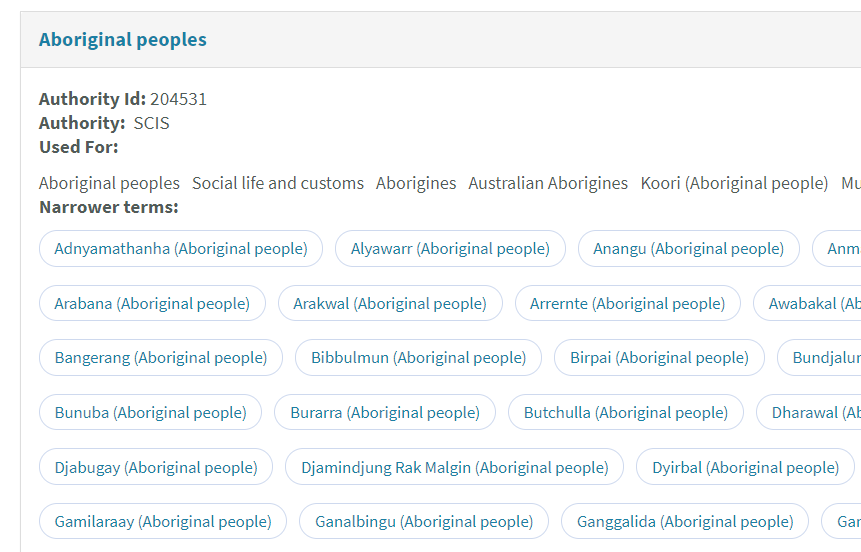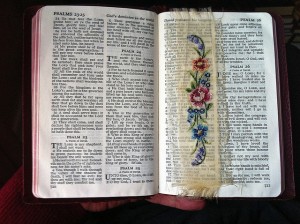This article is an updated version of an article published in Connections Issue 108 in 2019, as there have been recent changes to SCIS cataloguing standards.
The SCIS database is well known for its high-quality catalogue records. We sometimes receive queries from SCIS subscribers about inconsistencies in our records. However, these are often the result of standards changes that have occurred over SCIS’s lifetime. This article highlights some changes that have affected SCIS records, and other factors that may contribute to inconsistency in some records.
Cataloguing rules for resource description have changed
The earliest SCIS records were created in the 1980s, when we used AACR2 (Anglo-American cataloguing rules) to create our records. Over the years, AACR2 changed and we amended our processes with it. In 2013, SCIS implemented international standard, RDA (Resource Description and Access), which created many new changes in records. These include the following:
- There is no longer a rule of three. If there are more than three authors, the first named person is given main entry. In AACR2, this would have been title main entry. SCIS applies the RDA option to name only the first person,
or corporate body in the statement of responsibility if there are more than three, and to spell out the number of the others; for example, ‘Susan Jones [and four others]’. - There are no more abbreviations, unless they appear on the work itself. For example, the edition statement will vary according to how it appears on the item, such as ‘Second edition’ or ‘2nd edition’.
- GMD (General Material Designation) is no longer in use. This has been replaced by three new RDA MARC fields — 336, 337 and 338 — for information on content, media and carrier. Using these three RDA fields, SCIS has developed a ‘Resource type’ vocabulary to help our subscribers easily identify the resource type for each record.
- The 260 MARC field is no longer used for publication data. It has been replaced by MARC field 264, which makes a distinction between the functions of publication, distribution, manufacture, and copyright. Most SCIS records record publication details; for example, Sydney, NSW: HarperCollins Publishers, 2013.
- Square brackets are only used in RDA when information is not found on the item in hand. For example, The Girl and the Ghost, published by the author Ebony McKenna has no place of publication to be found on the resource itself. The place of publication is recorded as [Melbourne, Victoria], as information taken from Amazon shows that the author lives in Melbourne.
The implementation of diacritics
From January 2018, SCIS has applied diacritical marks in subject, name and series authorities. Diacritics have not been applied for SCIS records in the past, for example for Māori terms, as some library software could not display them. However, this is no longer an issue for vendors.
Changes in SCIS standards
SCIS standards are continuously reviewed and updated in order to meet customer demands as well as internal cataloguing needs. Where possible, we do run processes to apply these revisions to older catalogue records. However, we are not always in a position to make amendments to works that were catalogued before the standards were revised. Some examples follow.
- Fictional works in rhyme, such as those by Dr Seuss, are no longer classified as poetry and their subject headings are no longer given Poetry subdivisions. They are now classified as F for Fiction, with the Fiction subdivision being used, and the additional genre heading ‘Stories in rhyme’.
- Series sequential numbering terms such as Bk., Book, No., Number, Pt., Part, Vol., Volume and Issue are no longer included in the series heading, MARC field 830. RDA requires us to copy information from the book in hand exactly, although this can lead to inconsistencies in series filing. For example, what might be Bk. 1 in one country becomes Vol. 1 in another. In order to remove these inconsistencies, SCIS revised its cataloguing standards in May 2018 to simply record the series number and not record the designation (book, volume, etc.). An exception to this policy is to use the term ‘episode’ with numbering of television series.
Publisher inconsistencies
SCIS adheres to RDA, which states that cataloguers need to record data from the resource, as it appears. This can lead, in some cases, to inconsistencies due to the way information is recorded on each particular item. For example, differing terms are used among publishers for the place of publication, for example NSW, N.S.W. or New South Wales. Because the RDA instruction is to record data from the resource itself, as it appears, publisher names and places of publication cannot be standardised.
Another common issue is the use of duplicate ISBNs. Sometimes publishers will give the same ISBNs to multiple titles they have published. RDA requires us to record this information as is.
Series inconsistencies
Items in a series present special problems to cataloguers, often because of decisions made by publishers. Some examples follow.
- Changes in the series title when published in another country: For example, the series ‘The Saga of Darren Shan’, first published in the UK, is known in the US as ‘Cirque du Freak’.
- Classification: In general, all books in a series should have the same type of classification — either fiction or non-fiction. However, the content of the item is the most important part of determining the classification so there have been rare occasions when this has not happened (for example, a series on countries having a mixture of history and geography numbers). These records with inconsistent classifications are being amended as we become aware of them.
- Subject heading inconsistencies in fiction series: Although most fiction series have the same characters and common themes, the content of the item will determine the subject headings. For example, the series Pippa’s Island has additional subject headings, as well as the same headings such as ‘Islands–Fiction’ and ‘School stories’. The second book, Cub Reporters, has the headings ‘Reporters and reporting–Fiction’, ‘Journalists’ and ‘School publications’, whereas Book 4, Camp Castaway, has the headings ‘Outdoor education’ and ‘School campsites’.
- Differing sequences for subseries, especially in reading sets; for example, a variety of sequences for levels, colours, and numbering: These differing sequences make it difficult for users searching series titles. Again, since RDA requires us to transcribe the item as is, we must copy the information as the publisher presents it in the series statement, MARC field 490.
- Where possible, we are standardising the series headings, MARC field 830, for users’ benefit. In 2018 SCIS introduced series authority files to address these publisher inconsistencies in series titles. We are undertaking retrospective authorising to series headings allocated in the past 10 years.
Changes to subject headings
To meet users’ needs, SCIS cataloguers are constantly revising subject headings and establishing new ones for terms in common usage; for example, ‘Cyberbullying’, and new curriculum terms such as ‘STEM education’. However, early works on these topics may not have the most specific subject headings because they had not been established at the time.
Classification inconsistencies
It sometimes appears that resources with similar content have different, or inconsistent, DDC numbers. However, there are reasons for this:
- Classification varies according to the content of the item: For example, general works on the incidence of COVID-19 (614.592414) and medical works on COVID-19 (616.2414), have different content so will have different Dewey numbers.
- There are also differences in classification due to updates of DDC: For example, in DDC edition 22, graphic arts were classed in 760 (Printmaking and prints), but are now, in DDC edition 23, classed in 740 (Graphic arts and decorative arts).
- Differences occur due to cataloguer interpretation: For example, a book about trees and flowers could be classed under Trees, 582.16 — or Flowers, 582.13 — depending on how much of the content is, in the cataloguer’s opinion, about trees or flowers.
Prepublication and catalogue request items
With an increasing amount of SCIS records being produced from information sourced from online cataloguing requests and publishers’ websites, there may be differences between the information given in the SCIS record and that found in the actual resource. Cataloguers create the best possible record based on the data presented to them. This is why we prefer to catalogue from the item in hand and, where this is not possible, request scanned images of the publisher information pages, title page, etc. If that information is not given, we must wait until we receive the item at one of our offices to update the record and confirm that everything is correct.
Consistency matters
We run regular quality assurance tests to help us identify and correct any inconsistencies in records. To help us maintain the high quality of our records, we would appreciate it if you would let us know any errors or inconsistencies that fall outside the areas mentioned above. Please contact us at help@scisdata.com
By Mavis Heffernan, SCIS cataloguer





 Mavis Heffernan, SCIS Cataloguer, explores special book numbers.
Mavis Heffernan, SCIS Cataloguer, explores special book numbers. 

